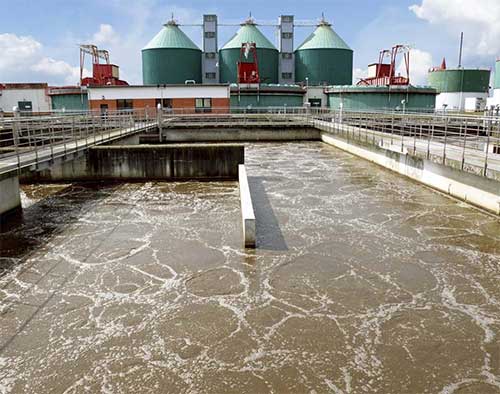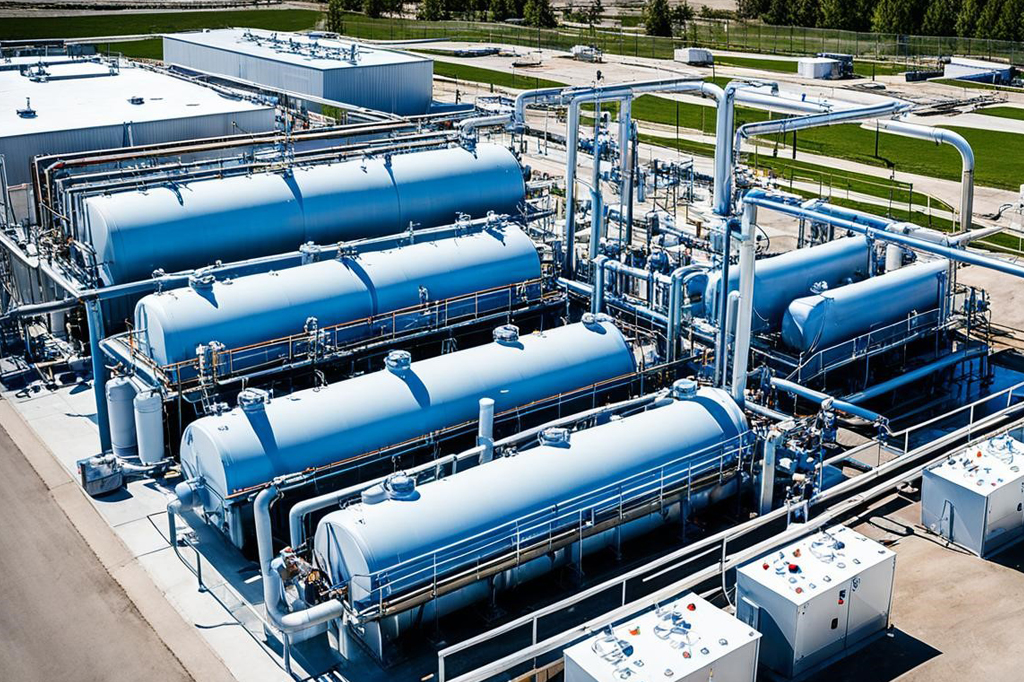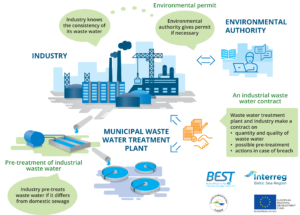Industrial Waste Water Treatment-- Comprehensive Systems for Wastewater Disposal
Wiki Article
Advancements and Breakthroughs in Industrial Waste Water Therapy Technologies
The landscape of industrial wastewater treatment is undergoing a transformative shift, driven by technologies that improve both efficiency and sustainability. As regulatory requirements advance, the assimilation of AI and maker understanding right into wastewater administration systems assures to enhance procedures and ensure conformity.Summary of Drainage Treatment Technologies
Wastewater treatment technologies encompass a series of approaches created to remove impurities from commercial effluents prior to their launch into the setting. These modern technologies are essential for preserving ecological equilibrium and making sure conformity with environmental regulations. The primary groups of wastewater treatment include physical, chemical, and organic approaches, each offering distinctive objectives based on the nature of the pollutants present.

Organic treatment methods utilize microbes to weaken natural issue, making them specifically efficient for organic-rich effluents. Strategies like activated sludge and biofilm reactors harness the all-natural destruction capacities of bacteria, bring about significant reductions in biochemical oxygen need (BOD)
Advanced Filtration Methods
Advanced filtering techniques represent a critical advancement in the world of commercial wastewater treatment, boosting the performance of contaminant removal procedures. Industrial Waste Water Treatment. These approaches encompass a variety of modern technologies, including microfiltration, ultrafiltration, nanofiltration, and reverse osmosis, which provide sequential obstacles for numerous particle dimensions and chemical structuresMicrofiltration and ultrafiltration use membrane systems to get rid of put on hold solids, microorganisms, and larger organic particles, improving the high quality of effluent before more treatment. Nanofiltration links the gap in between ultrafiltration and turn around osmosis, effectively getting rid of organic substances and divalent ions, therefore lowering the load on downstream processes.
Reverse osmosis supplies the highest degree of filtration by enabling just water and tiny particles to travel through its semi-permeable membranes, making it optimal for reclaiming premium water from commercial effluents. Recent innovations in membrane technology, including the growth of more fouling-resistant and durable products, have actually significantly enhanced operational efficiency and minimized expenses.
Integrating these advanced purification techniques not just boosts the overall treatment process yet also adds to sustainability efforts by enabling water reuse and resource recuperation in commercial settings. (Industrial Waste Water Treatment)
Biological Therapy Advancements

Additionally, the development of crafted biological systems, such as membrane bioreactors (MBRs), incorporates biological therapy with innovative membrane layer filtration. This combination enables higher effluent top quality and decreased impact, making it suitable click for more info for space-constrained industrial centers. Innovations in genetically engineered microbes have actually also emerged, boosting the biodegradation of details contaminants, such as pharmaceuticals and heavy steels, that are traditionally challenging to get rid of.
In addition, the execution of bioaugmentation strategies, where helpful germs are presented to enhance the existing organic treatment procedures, has actually shown promising lead to boosting treatment performance. These advancements collectively represent a trend towards more sustainable and effective organic treatment methods that can adapt to the progressing complexities of commercial wastewater streams. As sectors continue to focus on environmental conformity, these organic innovations will certainly play an important role in wastewater management.

Resource Recovery Approaches
In commercial settings, the integration of source healing techniques has become increasingly essential for boosting sustainability and reducing waste. These approaches concentrate on drawing out useful products and power from wastewater streams, thereby transforming possible toxins right into reusable resources.One famous technique is vitamins and mineral recuperation, where nitrogen and phosphorus, frequently present in excess in wastewater, are captured and converted right into plant foods. This not only lowers ecological influences yet also supplies a round economy service for agricultural applications. In addition, modern technologies such as anaerobic digestion allow for the conversion of natural waste right into biogas, a renewable power resource that can counter nonrenewable fuel source use in industrial operations.
Additionally, advanced filtration and membrane innovations help with the recuperation of commercial byproducts such as metals and salts. These recovered products can be reintegrated right into production procedures, reducing the need for virgin sources.
Future Trends in Drainage Monitoring
As sectors progressively focus on sustainability, the future of wastewater monitoring is set to undertake significant changes. Technical improvements, such as expert system and equipment discovering, will allow a lot more efficient tracking and management of wastewater systems. These innovations can predict upkeep demands, maximize treatment procedures, and improve decision-making, eventually decreasing operational prices and ecological click for info effect.Furthermore, the assimilation of round economic situation concepts will play an essential role in wastewater administration. Industries are expected to change in the direction of systems that not only treat wastewater but likewise recoup beneficial sources, such as nutrients, water, and power. This change will minimize waste and advertise the reuse of products, aligning with worldwide sustainability goals.
Arising treatment methods, such as membrane bioreactors and progressed oxidation procedures, will further improve the effectiveness of wastewater therapy, allowing for better effluents appropriate for reuse. Furthermore, regulative structures are likely to develop, stressing stricter standards for wastewater discharge and motivating industries to adopt cutting-edge therapy solutions.
Verdict
In conclusion, the evolution of industrial wastewater therapy modern technologies shows a substantial shift in the direction of boosted performance and sustainability. Technologies in innovative filtering techniques, organic therapies, and resource recuperation approaches go to these guys highlight the sector's commitment to ecological stewardship. The integration of expert system and maker discovering better optimizes these procedures, guaranteeing regulatory conformity and advertising a round economic climate. Proceeded developments in these areas will play a vital role fit the future of wastewater monitoring and protecting essential water resources.The landscape of commercial wastewater therapy is undertaking a transformative shift, driven by advancements that improve both performance and sustainability.Wastewater therapy modern technologies incorporate a range of approaches created to get rid of contaminants from industrial effluents before their release into the setting.Utilizing the power of organic procedures has led to substantial developments in the treatment of industrial wastewater.Additionally, the application of bioaugmentation methods, where useful germs are introduced to improve the existing biological treatment procedures, has revealed appealing outcomes in enhancing therapy efficiency. These developments jointly represent a fad towards more reliable and sustainable biological therapy methods that can adjust to the developing intricacies of industrial wastewater streams.
Report this wiki page